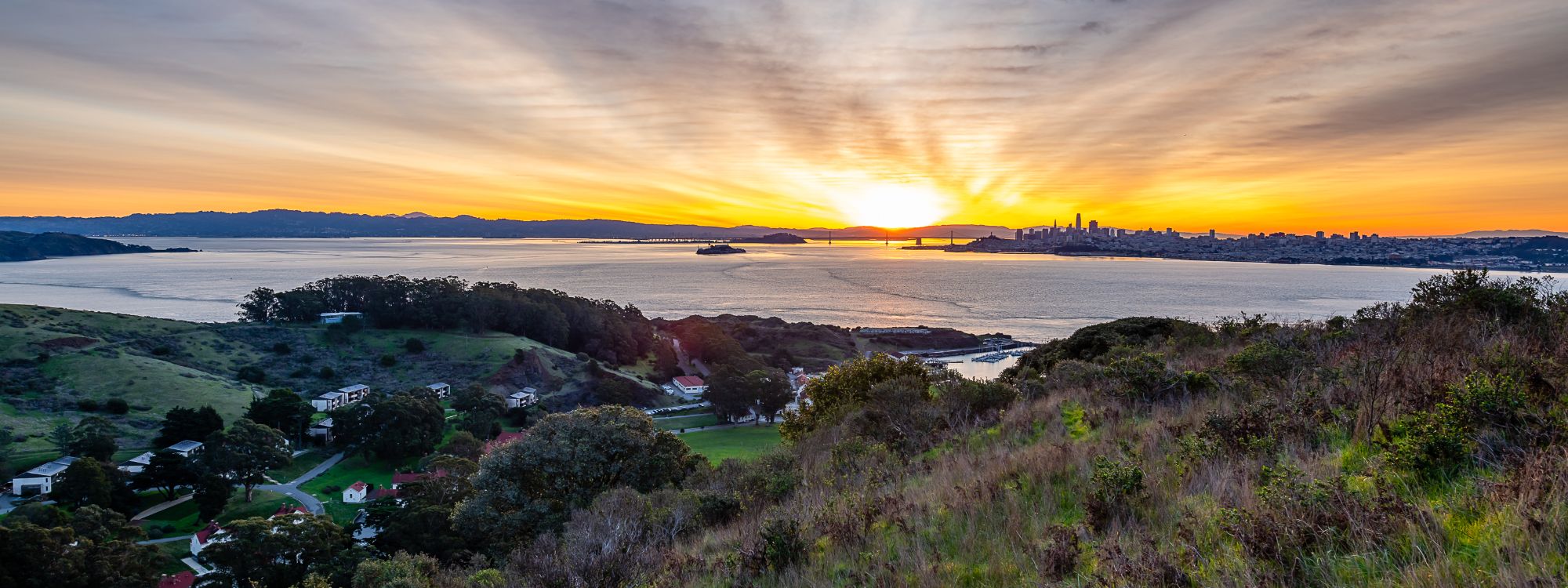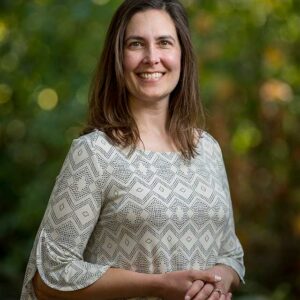What does it mean to be climate resilient in 2024? This is top of mind as California emerges from a deluge of rainfall this winter bracing for what’s around the corner with wildfires.
We can all agree that climate change is here. The Bay Area’s greatest challenge—and opportunity—is to prepare our landscapes and climate-vulnerable communities for the climate impacts we’re already facing that are expected to increase over time.
What does the term resilience mean to our work here at Greenbelt Alliance? Resilience means a thriving relationship among communities, natural and urban landscapes, and ecosystems. A state in which we can respond, adapt and recover from climate impacts. Working towards resilience requires a shift in our thinking from a survival mindset to a thriving mindset.
This is the spirit of Greenbelt Alliance’s agenda for the next five years! We are rising to the challenge, forging unique partnerships, educating communities, and advocating for change that prioritizes nature-based solutions.
I sat down with Greenbelt Alliance’s Executive Director, Amanda Brown-Stevens, and our newly-appointed Board Chair, Laurel Prevetti, to discuss the future of the organization and what inspires our work to build thriving, climate-resilient communities.
Why does Greenbelt Alliance view both housing and nature as climate solutions?
Laurel Prevetti: Greenbelt’s 2024-2028 strategic plan hinges on the call for realizing a climate-resilient future by shifting the way our region grows through the land-use decisions of individual communities. Land-use is a powerful tool to take action to address the climate crisis.
We know there is enough space within existing cities to build climate-resilient homes that are needed across all income levels. There’s no need to sprawl out into the natural and working lands bordering cities.Increasing new homes within existing communities also reduces greenhouse gas emissions from long commutes, reducing climate risks and impacts on the natural environment. Win win situation!
Amanda Brown-Stevens: This is why Greenbelt Alliance focuses on accelerating climate-smart housing abundance to support building more homes in places safe from climate hazards. And, we advocate for preserving open space and stopping sprawl development on natural and agricultural lands so that everyone has access to nature and its multitude of benefits.
A big component of the next five years is connecting with people. We are activating environmentalists as advocates for housing. We are connecting more people to nature through our outings program.
We’re also centering historically marginalized voices in local planning processes by sharing information about climate risks and nature-based solutions, and then finding creative, accessible ways to collaborate on solutions. At the heart of our agenda is being able to leverage nature to adapt and ensuring increased funding is dedicated to investing in nature.
What different approaches are needed now more than ever?
Amanda: Something I really appreciate about Greenbelt Alliance is how partnerships and equity are centered in the work. We are accelerating community awareness and participation of local voices in climate adaptation planning, especially for watershed resilience as shoreline cities are being inundated with water. We are working in fire-prone areas to equip the collaboration between residents and decision makers so communities co-exist with wildfires.
And since climate hazards don’t stop at any one city’s boundary but affect multiple jurisdictions, our team works to foster the collaboration needed to plan, implement, and manage long-term resilience projects across the region.
As we do this work, we’re highlighting who is most vulnerable to climate change and housing inequality, and then working with these same communities to reverse harms and center their lived experiences in planning for solutions.
Laurel: Something I want to highlight is the importance of local community voices. Throughout our 65+ year existence, it’s really been these local community voices and actions that have shaped policy wins at the local, regional, and statewide scales. Our local advocates, community leaders, partners, and residents are instrumental to our driving the change we need in the Bay Area.
What inspires this work?
Laurel: Our unique situation living in the Bay Area is that we are right now—and will be into the future—one of the most climate-stressed places in the world. We are facing sea-level rise, extreme flooding and groundwater rise. We are also experiencing increasingly severe cycles of wildfires and extreme heat, and drought and flooding.
At Greenbelt Alliance, we are working together with local community members and other strategic partners to transform this region from being a place where people don’t just merely survive the next wildfire or flood event. We can be a region where all people, living creatures, and precious landscapes thrive well into the future. We can do this! Collaborating to design innovative solutions that center nature is one of our key platforms.
Amanda: Our decades of experience and coalition-building are assets. Greenbelt Alliance has honed how to navigate and bring about transformation. One of the most successful advocacy campaigns was when Greenbelt Alliance (which was called the People for Open Space at the time) created a 9,200 acre park in the Pleasanton Ridgelands. This campaign successfully kept the ridgelands between Hayward and Livermore valley as open space and safe from a proposed housing and transportation development.
Despite the increasing threats of climate-related hazards, I’m constantly inspired by the bigger picture future we’re working towards – more communities enjoying tree-lined streets and abundant greenspaces and our diverse cities building more housing accessible to urban parks, community services, jobs, and public transit.
Over our history, Greenbelt Alliance has successfully protected the region’s open spaces, protecting our rolling hills, bountiful hills, and wildlife habitat. Now, the future is ensuring that Bay Area communities are making good land use decisions that will enable all of us to better withstand the future floods, fires, and extreme heat coming our way. It’s a bold agenda and we’ll have to do things differently than we’ve ever done before. That call for change is motivating!
Read our new strategic plan: www.greenbelt.org/strategic-plan.





